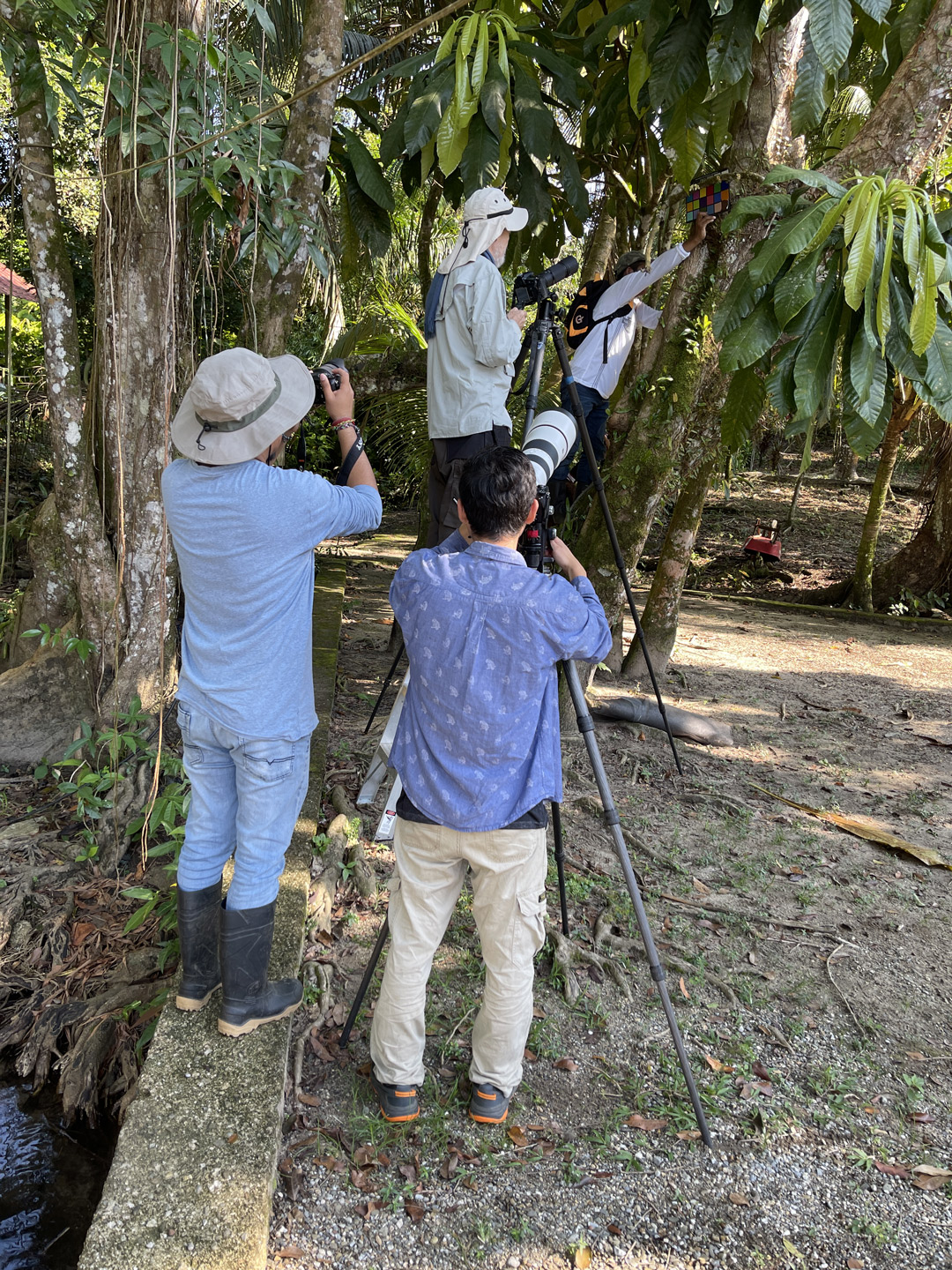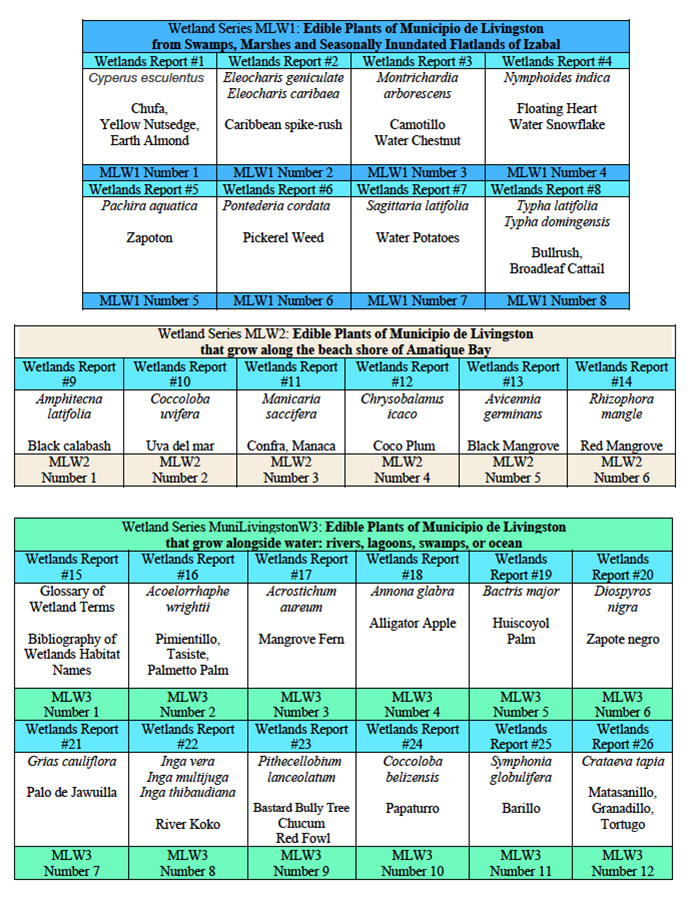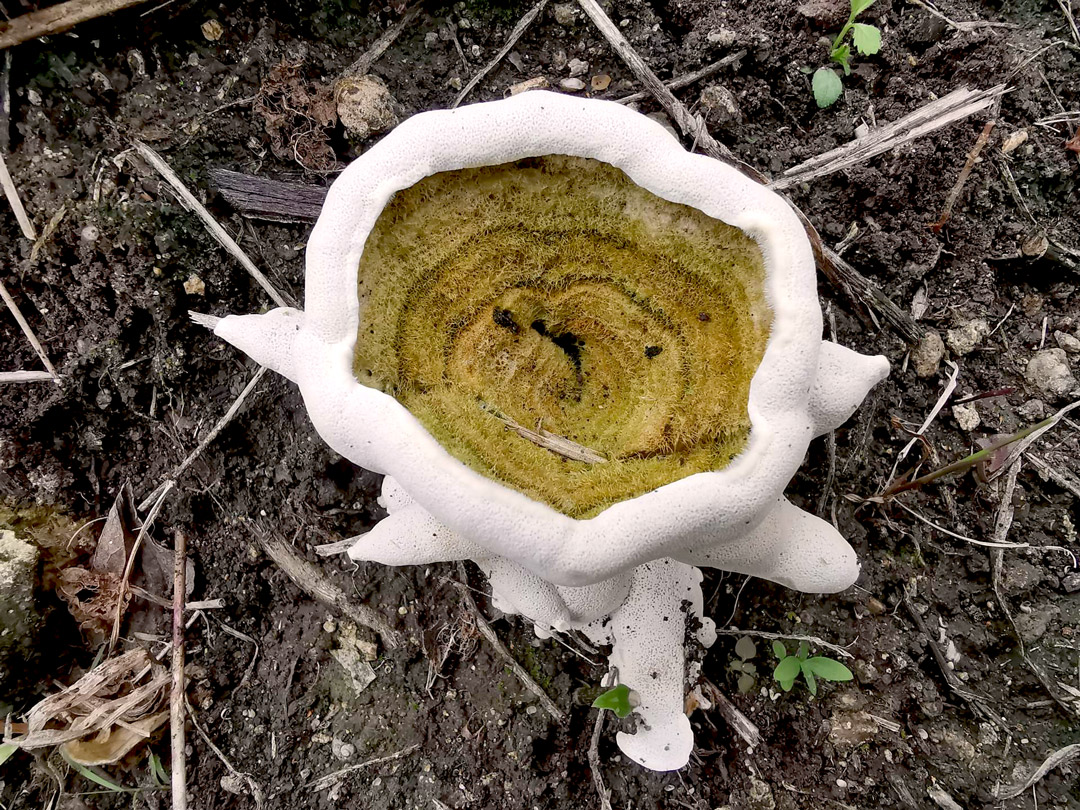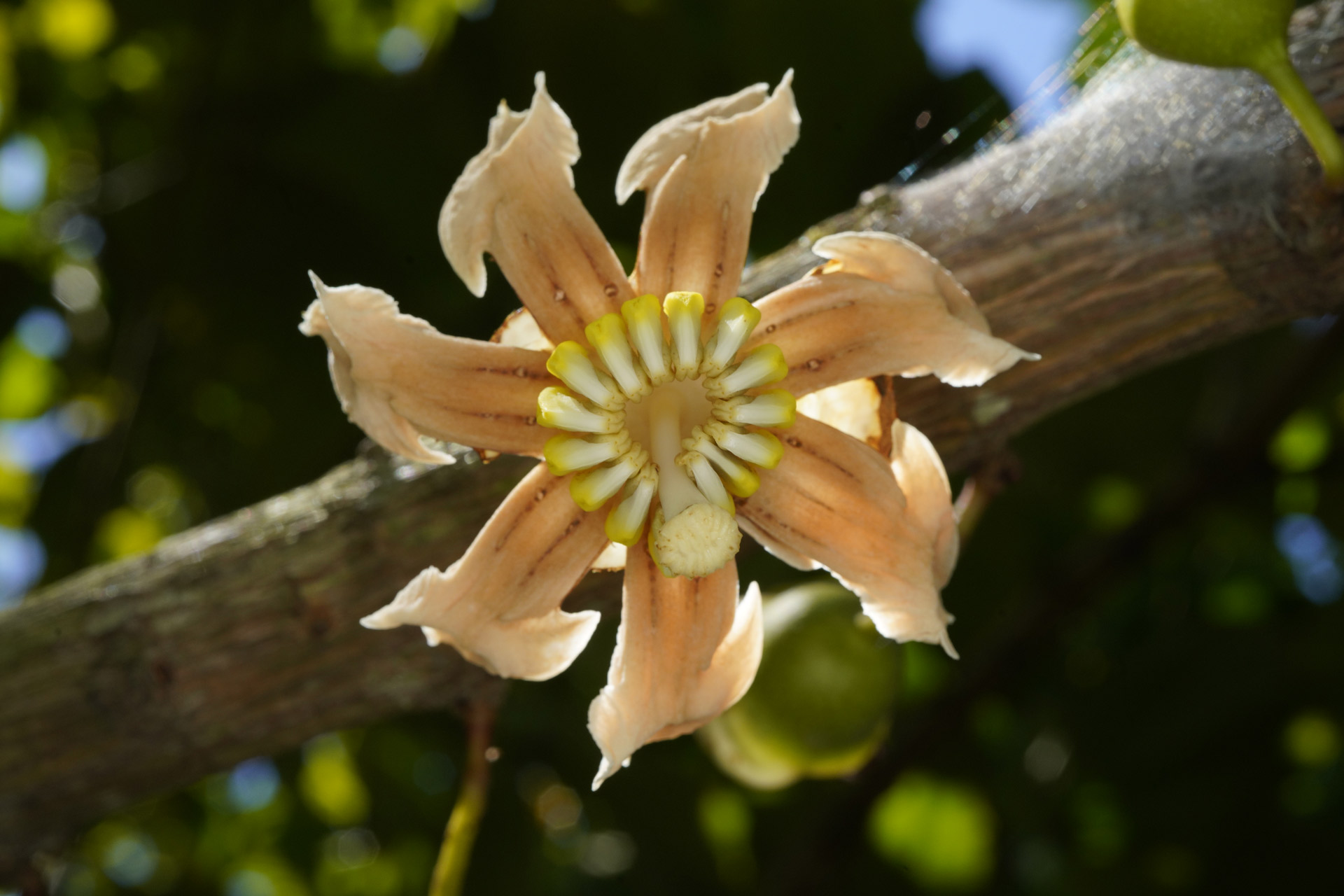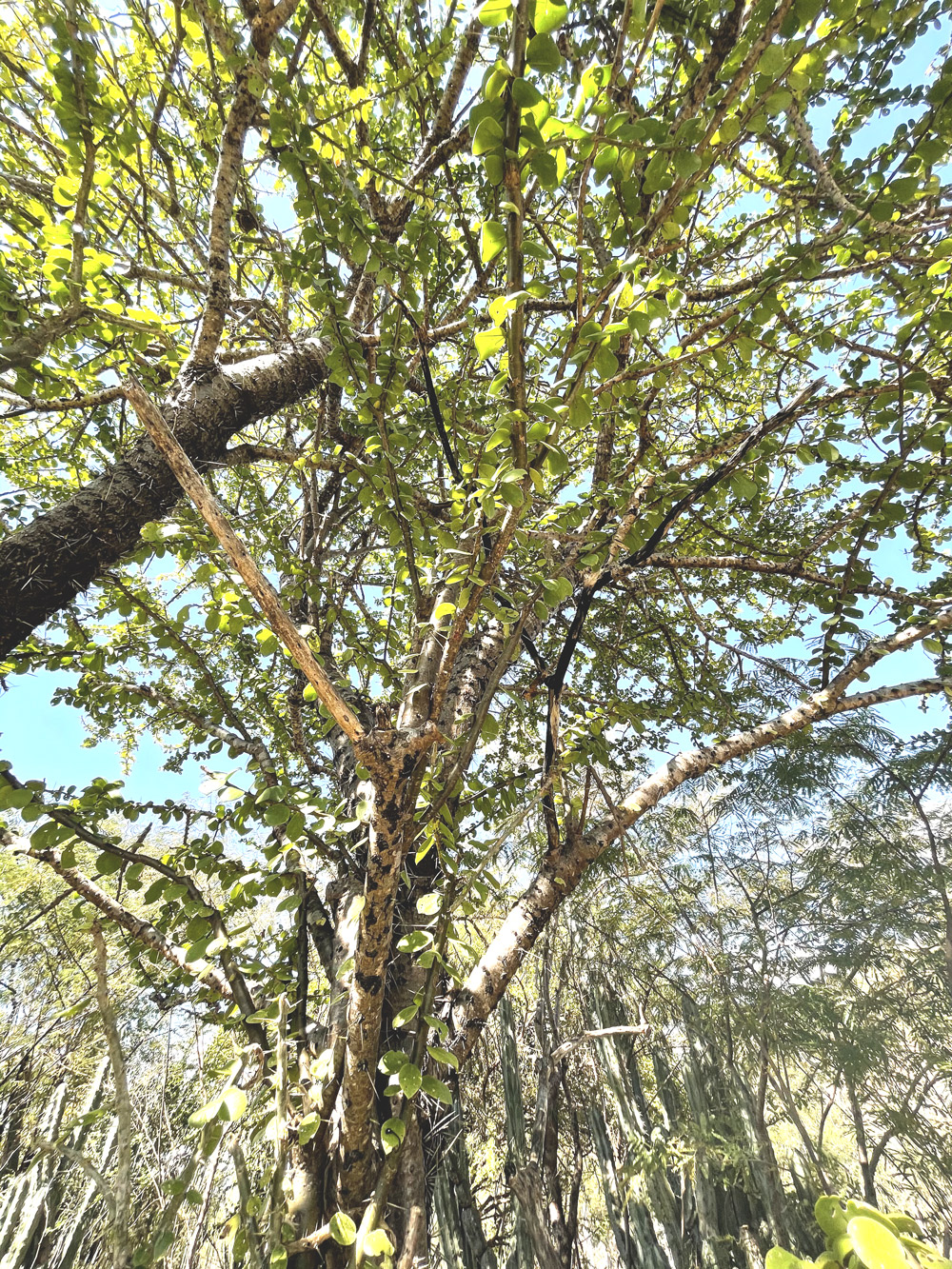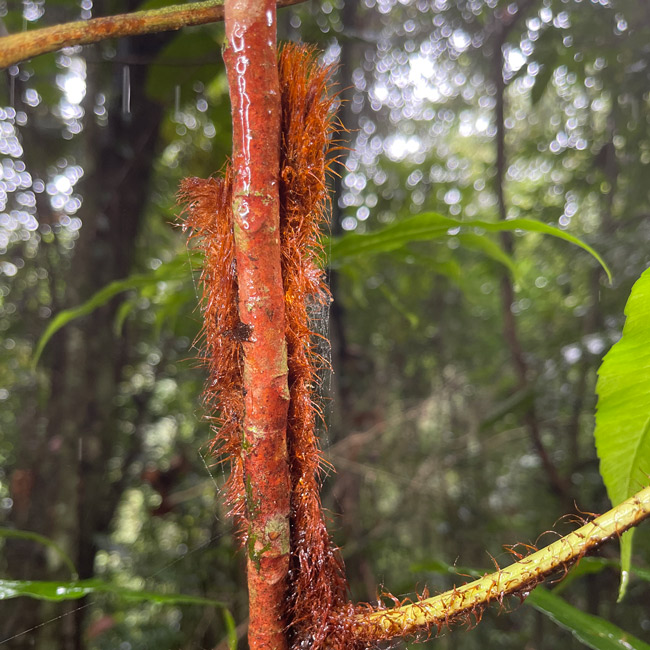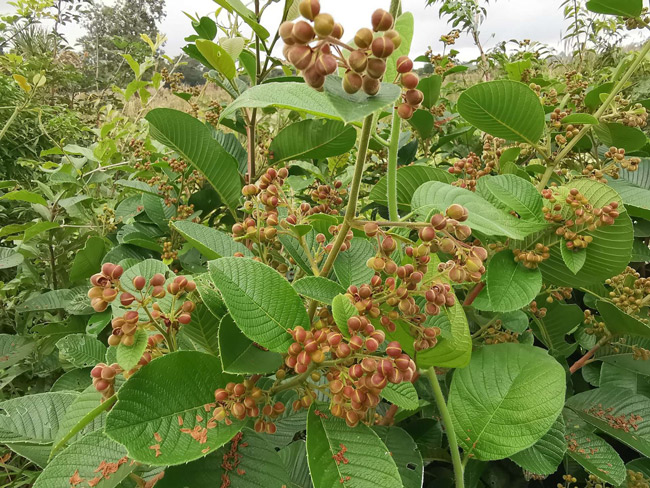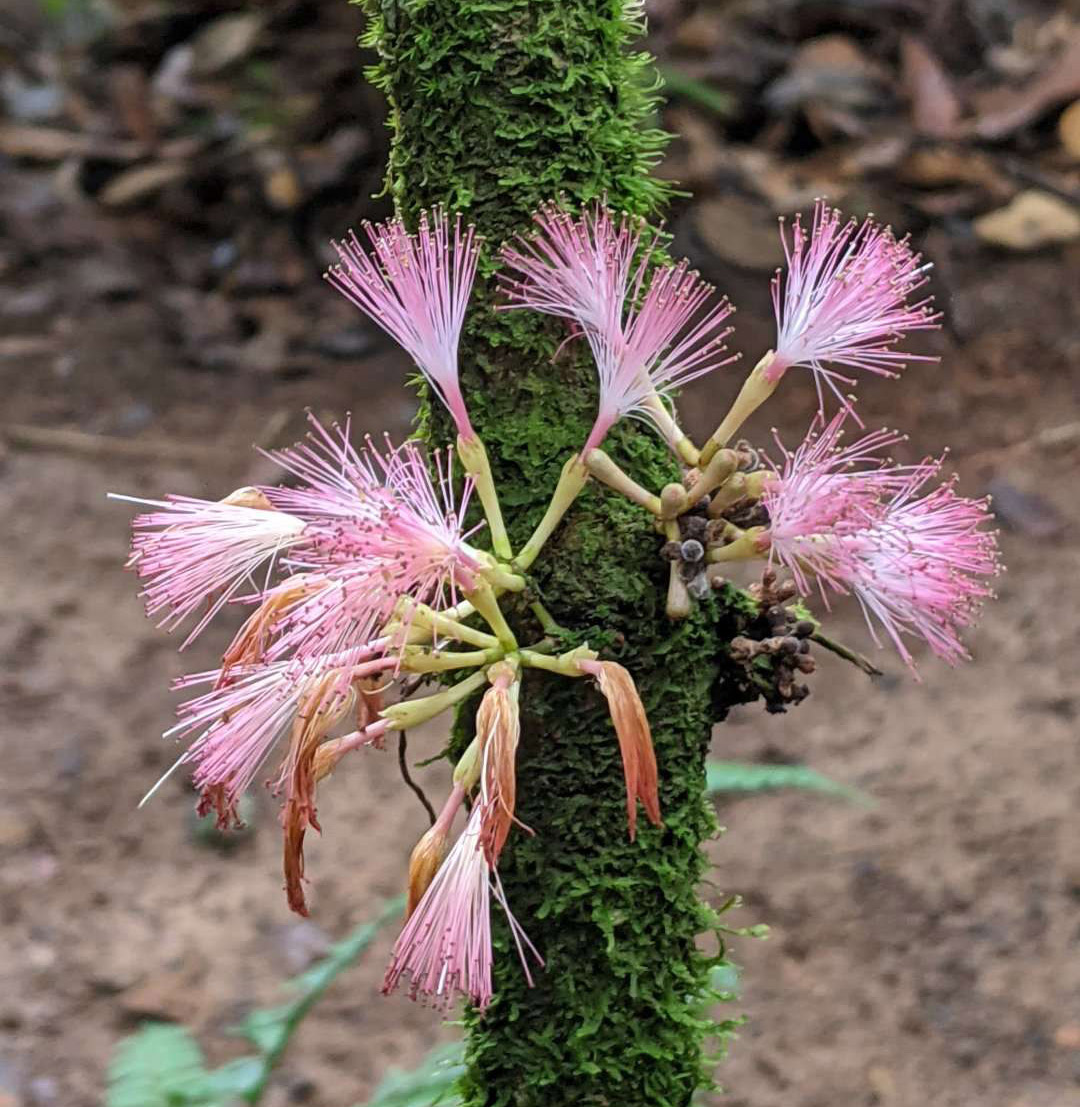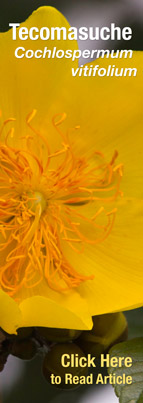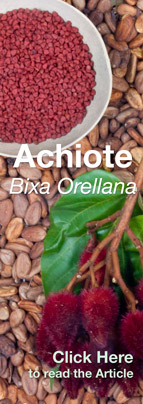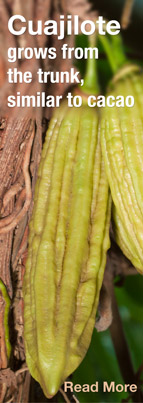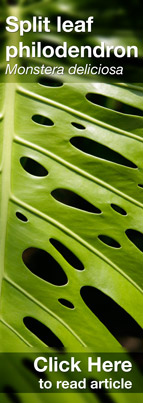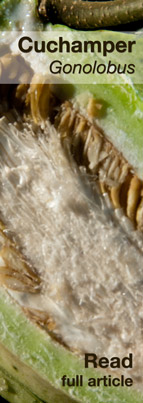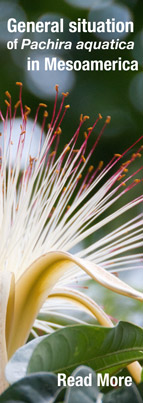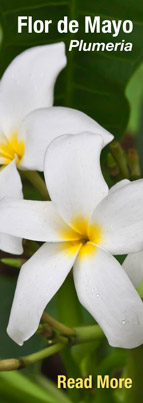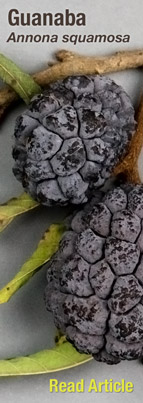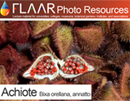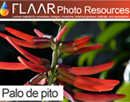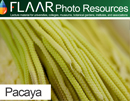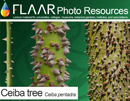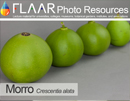When time and funding permit, each flower (each plant species) will have its own page, and its own PDF, and eventually its own PPT so that professors and students have plenty of material on Guatemala (and Honduras, etc) to study.
Heliconia adflexa, Coban, Guatemala, Hotel Monja Blanca, FLAAR, by Nicholas Hellmuth
This space is for flowers
we have recently found and photographed.
|
| Share
|
|
|
March field trip to Municipio de Livingston produces botanical success every day
Posted March 25, 2021
Grias cauliflora tree has flowers on trunk and branches, so this tree is cauliflorous (same as Theobroma cacao, and Crescentia cujete, and Crescentia alata).
The March 2021 ethnobotanical and zoology field trip is the west end of Canyon Rio Dulce and east half of El Golfete, Municipio de Livingston, Izabal, Guatemala, Central America.
Here is David, Haniel and Nicholas with helpful assistants doing the photography of the cauliflorous branches and trunk of Grias cauliflora tree. We have Sony, Nikon, and Canon cameras and every kind of macro lens: 35mm, 50mm, 60mm, 105mm, 200mm Nikon tele-macro, and 180mm Canon tele-macro. Plus a 5X Canon super-macro lens system.
|
|
Edible plants for the Classic Mayan people from swamps, marshes, riverside and lake side ecosystems
Posted March 18, 2021
We have been accomplishing field work in the wetlands of the Municipio de Livingston, Izabal, the far eastern side of Guatemala, Central America. We have found dozens of plants, with edible fruits or other edible parts, growing in the marshes, swamps, above the sandy beaches (into the mangrove swamps), and along the edges of rivers, lagoons and estuaries.
We show here the names of the first 26 edible wetlands plants that we have learned about so far. We have found and photographed at least 23 of these and hope to find the missing species in our upcoming field trips.
First we will publish the six edible plants that grow near the sandy coastal areas and within the mangrove swamps near the coast. Then in April we will do another category, and my May or June hope to have all 26 published, with abundant photographs in high-resolution. But at least now we can show you the 26 edible plants.
The Maya did not need raised field agriculture engineering work to grow these plants. The Maya did not need drained field agriculture or local variations of chinampas. The Maya did not need to chop everything down to plant these 26 species: all grow naturally and happily by themselves and produce edible fruits and other edible parts every year.
|
|
Vanilla orchid vines are flowering in several parts of Municipio de Livingston, Izabal, Guatemala
Posted March 18, 2021
Our team in their office in the town of Livingston (Caribbean area at end of Rio Dulce) was kindly notified independently by two different people who have wild vanilla orchid vines giving flower this month:
- George Reneau, of the finca Where the Pirates Hide, on the outskirts of the town of Livingston.
- Cristobal Ic, of Aldea Buena Vista Tapon Creek (a Q’eqchi’ Mayan village near the coast of Amatique Bay)
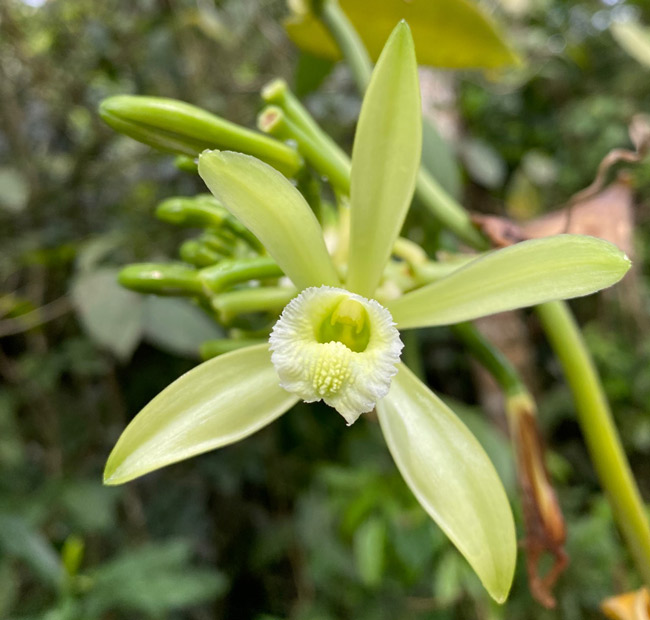 |
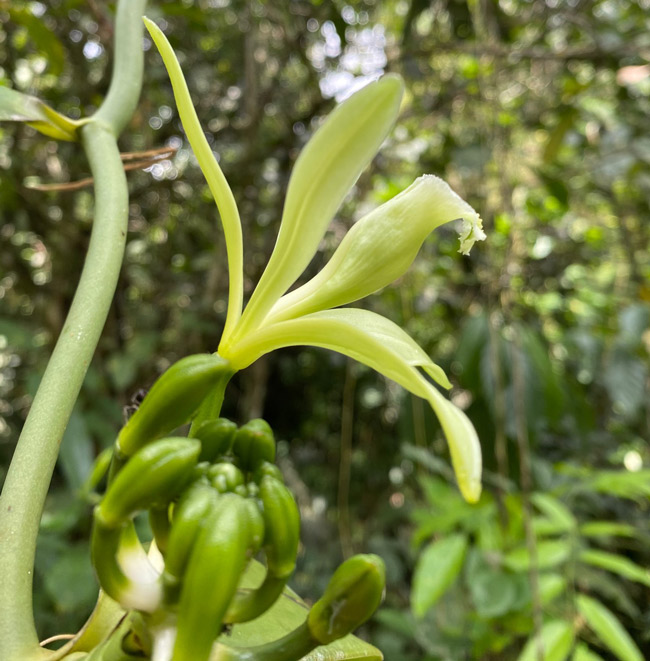 |
Flower of wild vanilla orchid vine, Where the Pirates Hide, outside town of Livingston, Izabal, March 2021. |
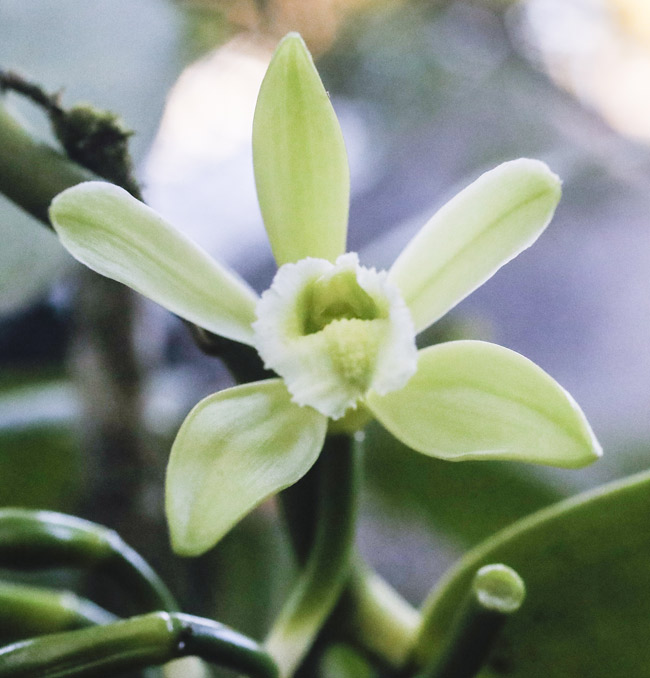 |
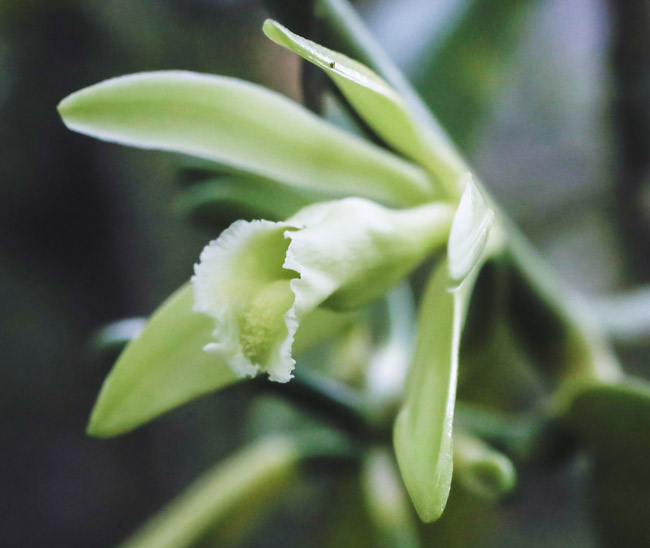 |
Flower of wild vanilla orchid vine, Aldea Buena Vista Tapon Creek, Municipio de Livingston, Izabal, Guatemala, March 2021. |
|
|
Amazing fungus, we have never seen this in Guatemala before
Posted February 22, 2021
In my 50+ years in Peten, Campeche, Quintana Roo, Belize, Izabal, and Alta Verapaz I have never seen this mushroom until park ranger Teco (Moises Daniel Perez Diaz) send me these photographs today.
He said they are still small, and will continue to grow.
This is why it would he helpful to return to Parque Nacional Yaxha, Nakum and Naranjo to use macro high-resolution cameras to photograph these. I would also like to record this one with 3D scanner.
|
|
Flower starts pure white; turns pure chocolate; is also cauliflorous
Posted February 18, 2021
This tree is worth visiting when it is in full flower. The Bellucia pentamera flowers are of photogenic size and shape. The petals are pure white when they open. As the flower matures, it turns bright rust color and then to light chocolate brown color as it wilts. The browner phase we show on our full page.
Plus, this Bellucia pentamera tree flowers directly from the main branches, so is cauliflorous (however we have not yet seen it flower from the trunk).
You can see this tree on the hill overlooking the town of Livingston, Izabal, Guatemala, at a place open to tourists named Where the Pirates Hide. Info on how to reach here and more photos are on the page that shows the more wilted stage of the flower.
|
|
Is it a leafy tree? Or a cactus tree with branches and leaves?
Posted February 16, 2021
There is a tree that grows parallel to Highway CA9, from about km. 88 to km. 100+ (but not in stream beds that cross this bosque seco; these stream beds are moist; a hundred meters away it is bone dry desert: all kinds of cacti plants here. The one we show here at first I thought was a “tree” but then Victor Mendoza identified the tree as a cactus named _Pereskia lyechnidiflora_. Vivian Hurtado prepared a web page with description and bibliography. I added my photos.
For the past decade, since we do field work in Peten and now in Izabal, we drive through the bosque seco parallel to Highway CA9 and the Motagua River. A mountain chain is several kilometers to the north (that creates a rain shadow, so the area on the north side of the mountain gets drenched with rain (caught by the mountain tops); so when the clouds finally make it over to the foothills, there is not much water in them (so not much rain except during a short rainy season)).
|
|
Where is this blood coming from? A Bleeding Tree?
Posted February 03, 2021
This photo is a teaser, to raise curiosity of “what is out there in the jungles of Central America?” We all know the jaguars, monkeys, crocodiles, snakes, scorpions. What about the marvels of unexpected plants?
Why is the back of this sapling sticky BLOOD RED?
What is the fuzzy furry stuff on the other side? Is this a giant larva of a giant moth or butterfly crawling up the sapling?
I photographed this with my iPhone 12 Pro Max because it was pouring rain, so was not good idea to pull out a sophisticated Nikon, Canon, or Sony camera that we have lots of. But with an umbrella over my head I was able to capture this “bloody encounter.”
More next week. We are curious if anyone recognizes that is the monster generating the BLOOD.
With the cooperation of the Municipio de Livingston, and the team of FUNDAECO, we of FLAAR (USA) and FLAAR Mesoamerica (Guatemala) spent several days exploring the rain forests of Cerro San Gil, Municipio de Livingston, Izabal, Guatemala, Central America.
|
|
Medicinal plants of the Mayan people can be found in rain forests and swamps
Posted January 21, 2021
On 22 January we will be headed to the Municipio de Livingston to continue our long range project to find, photograph, document, and publish flora and fauna which has not been fully discussed for this Caribbean part of Guatemala.
We will spend four days in swamps, marshes, rivers, and creeks (parallel to El Golfete part of Rio Dulce), to study lots of the water-related trees and plants. Many of these wild native plants have edible fruits, nuts, seeds, stems, roots, and other parts. Lots of these plants provide medicinal components help to local Mayan people.
Then we will spend four days in the hillsides and hilltops of the rather high Cerro San Gil nature reserve. Nine of our team will work together on all this field work. So lots of flora and fauna to be reported in the coming weeks.
|
|
Flowering water vine, Parque Nacional Yaxha, Nakum, and Naranjo (PNYNN)
Posted January 19, 2021
Park ranger Teco (Moises Daniel Perez Diaz) kindly sent us this photo of the buds of a vine named bejuco lambedor. It has this name because if you are on a motorcycle and driving through the rain forest and your head brushes against this vine, it leaves burning mark on your skin; leaves a wound.
The vine produces drinkable water (evidently no wounds on your throat or lips). Literally; local people out in the rain forests of Peten (chicleros, xateros, etc.) routinely drink water from four plants:
- Bejuco lambedor
- Bejuco de Estrella
- Bejuco de uva
- Raiz del palo de copo
We see these leaves everywhere, but this is the first time we have seen the flower buds. We hope in the future to be able to receive photos from Teco of the actual flowers. We (FLAAR Mesoamerica) provide mobile phone cameras and Internet to plant scouts so they can find awesome plants in the areas where they live and work.
|
|
Trees in Guatemala that flower and fruit from the trunk
Posted January 12, 2021
Cauliflorous flowers of the trunk of Zygia gigantifloliola, paterna de montaña, Reserva Natural Tapon Creek.
This photograph was taken today by Lucas Cuz, Q’eqchi’ Mayan park ranger of the FUNDAECO managed Reserva Natural Tapon Creek (several kilometers south of the Rio Sarstun-Rio Sarstoon parks of Izabal and Belize on the north side of the border).
Lucas Cuz is a plant scout for FLAAR; this means he searches for plants of interest, takes photos and sends them via Skype or comparable. We provide the special Google telephone camera, Internet, and expenses to our plant scouts in several areas of Izabal, Peten, and Alta Verapaz.
Parque Nacional Yaxha, Nakum and Naranjo
Carnivorous Plants
Plants of Municipio de Livingston, Izabal
- Acrostichum danaeifolium, giant leather ferns
- Bellucia Pentamera
- Bibliography on Grias cauliflora
- Bibliography on Licania platypus
- Bibliography on Mangle negro (Avicennia germinans) L.
- Bibliography on Montriacardia arborescens
- Bibliography on Typha domingensis and Thypha latifolia
- Conocarpus erectus, white mangrove
- Edible Wetlands Plants, Hotel Tortugal
- Heliconia latispatha
- Heliconia wagneriana
- Manicaria saccifera Confra palm
- Neotropical trees of Guatemala need protection
- Nymphoides indica, waterlily flowers
- Pachira aquatica, zapoton
- Bibliography on Pithecellobium Mart., Neotropical trees of Mesoamerica
Ecosystems, Wetlands Aquatic Plants
Smartphone Camera Reviews
Bushes and small trees
Fungi and Lichens
Orchids
- Bibliography Bletia purpurea, aquatic orchid
- Bibliography, Epidendrum radicans
- Bibliography on Habenaria Orchids from Yaxha
- Bibliography, Lycaste virginalis var. alba.
- Bibliography, Macroclinium bicolor
- Bibliography, Prosthechea cochleata
- Bibliography Sobralia macrantha, Lirio de San Juan
- Bibliography, Sobralia xantholeuca
- Bibliography on Terrestrial shade orchids from Guatemala
- Bibliography on Terrestrial sunny orchids from Guatemala
Botanical Terms
Maya and Aztec flavorings for cacao, cocoa, chocolate
- Achiote, Bixa orellana
- Bibliography on Achiote, Bixa orellana
- Bibliography on Esquisúchil, Bourreria huanita
- Bourreria huanita
- Cassia grandis, bucut
- Chile Chocolate
- Chile Chocolate (Capsicum annuum var accuminatum)
- Chiranthodendron pentadactylon
- Cymbopetalum penduliflorum
- Guazuma ulmifolia
- Haematoxylum brasiletto
- Piper auritum, hoja santa
- Piper species
- Quararibea funebris
- Sterculia apetala, castaño
- Tagetes sp., Marigold
- Talauma, a variant of Magnolia
- Vanilla orchid
- Virola and nutmeg
Cacao, cocoa, chocolate
Consulting cacao & Theobroma species
Tobacco Ingredients of Aztec & Maya
Trees of Mesoamerica
- Bibliography on Acacia dolichostachya, Wild tamarind
- Bibliography, Bellucia costaricensis
- Bibliography, Bucida buceras
- Bibliography on Coccoloba belizensis Standl.
- Bibliography on Cojoba sp. and Cojoba arborea
- Bibliography, Ficus.
- Bibliography on Haematoxylum campechianum and H. brasiletto
- Bibliography on Hibiscus pernambucensis
- Bibliography on Ipomea murucoides
- Bibliography on Lacmellea standleyi, lechemiel
- Bibliography on Leucaena leucocephala
- Bibliography on mangle rojo (Rhizophora mangle)
- Bibliography on Manzanillo, Alseis yucatanensis Standl.
- Bibliography on Matilisguate, Tabebuia rosea
- Mangrove swamp Trees
- Bibliography on Ruagea insignis
- Bibliography on Pterocarpus officinalis
Bombacaceae, Bombacoideae
Tropical Fruits of the Maya
- Avocado Hass
- Bibliography on Coloc, Talisia floresii
- Bibliography, Dichogamy of avocado species
- Bibliography on Guayo, Talisia olivaeformis
- Bibliography on Laetia thamnia, Bakelac
- Bibliography on Maracuyá, Passiflora quadrangularis L.
- Bibliography on Punica granatum L., Granada
- Cashew
- Cuajilote, Parmentiera aculeata
- Granada
- Guanabas and Annonas
- Guava, Guayaba, Psidium guajava L
- Introduction to Papaya
- Nance a fruit of prehispanic Guatemala
- Passion flowers and fruits
- Passion flower, giant fruit
- Talisia floresii, Sapindaceae
- Carica Papaya Bibliography
Tropical Nuts
Spices, condiments, food coloring
Medicinal Plants
- Aristolochia, The largest flower in Guatemala, Bibliography
- Asclepias curassavica, bibliography
- Bibliography on Ciricote, Cordia dodecandra
- Bibliography on Contrahierba, Dorstenia contrajerva
- Bibliography on Falso hibisco, Malvaviscus arboreus
- Bibliography on Huele de noche, Cestrum nocturnum
- Bibliography on Lirio araña, Hymenocallis littoralis
- Bibliography on Roble Prieto, Ehretia tinifolia
- Bibliography, Tithonia diversifolia
- Canak
- Calliandra general info
- Guava, Guayaba
- Magnolia and Taluma
- Mayan medicinal plants
- Piper
- Tecomasuche, Coclospermum vitifolium
- Bibliography on Sufricay, Malmea depressa
- Bibliography on Wigandia urens
Underutilized edible plants
Edible Plants of the Mayan World
- Acacia, subin, bullhorn acacia
- Bibliography, Annona muricata
- Bibliography, Annona purpurea
- Bibliography, Annona reticulata
- Bibliography on Chipilín, Crotalaria longirostrata
- Bibliography on Chirimoya, Annona squamosa
- Bernoullia flammea
- Canna indica, tamale wrap
- Cuchamper, Gonolobus
- Guava, Guayaba
- Bibliography, Gonobolus sp.
- Bibliography, Parmentiera aculeata
- Pacaya palm Chamaedorea tepejilote
- Split leaf philodendron, Monstera deliciosa
Plants and trees used to produce incense
Utilitarian Plants
- Bibliography, Acacia farnesiana
- Bibliography on Aechmea bromeliifolia
- Bibliography on Agave americana
- Bibliography, native Agave species from Guatemala
- Bibliography on Anthurium crassinervium (Jacq.) Schott
- Bibliography on Balsa, Ochroma pyramidale
- Bibliography on Bamboo, Guadua longifolia (E.Fourn) R.W.Pohl
- Bibliography, Crescentia alata
- Bibliography, Crescentia cujete
- Bibliography on Hule, Castilla elastica
- Blepharidium guatemalense, irayol blanco
- Crescentia alata, Crescentia cujete
- Tecomasuche, Coclospermum vitifolium
- Bibliography on Coxte, Colubrina arborescens
- Bibliography on Madre cacao, Gliricidia sepium
- Bibliography on Tillandsia usneoides
Flowers, edible
Camera Reviews for Photographing Flowers and Plants
Toxic plants
Trees with conical Spines
Flowers native to Guatemala visible now around the world
SUBJECTS TO BE COVERED DURING NEXT 6 MONTHS
Grains
Fruits (typical misnomer mishmash of Spanish language)
Other Fruits (primarily fruits from trees)
Fruits (vines or cacti)
Flavoring, herbs, and spices
Flowers, sacred
Plants which are sacred
Plants mentioned in myths
plants to produce Alcohol
Plants used for drugs
Plants or trees that are used to produce incense
Most common introduced plants (not native)
Glossaries

















